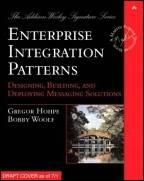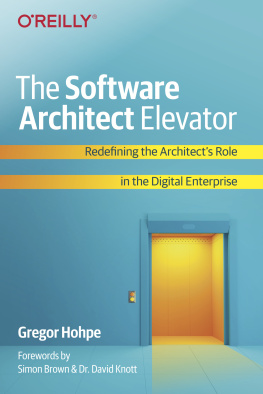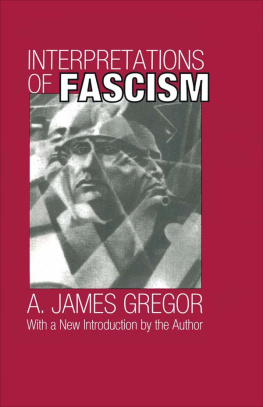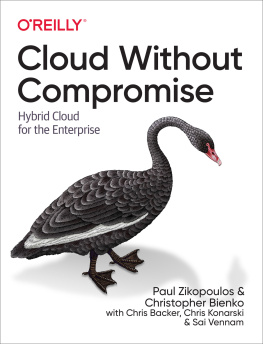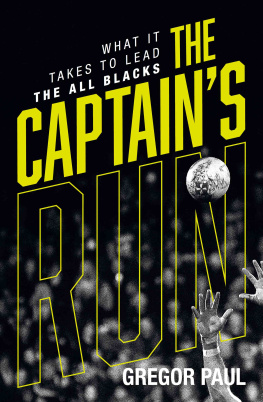Gregor Hohpe - Cloud Strategy
Here you can read online Gregor Hohpe - Cloud Strategy full text of the book (entire story) in english for free. Download pdf and epub, get meaning, cover and reviews about this ebook. year: 2020, publisher: leanpub.com, genre: Romance novel. Description of the work, (preface) as well as reviews are available. Best literature library LitArk.com created for fans of good reading and offers a wide selection of genres:
Romance novel
Science fiction
Adventure
Detective
Science
History
Home and family
Prose
Art
Politics
Computer
Non-fiction
Religion
Business
Children
Humor
Choose a favorite category and find really read worthwhile books. Enjoy immersion in the world of imagination, feel the emotions of the characters or learn something new for yourself, make an fascinating discovery.

- Book:Cloud Strategy
- Author:
- Publisher:leanpub.com
- Genre:
- Year:2020
- Rating:4 / 5
- Favourites:Add to favourites
- Your mark:
- 80
- 1
- 2
- 3
- 4
- 5
Cloud Strategy: summary, description and annotation
We offer to read an annotation, description, summary or preface (depends on what the author of the book "Cloud Strategy" wrote himself). If you haven't found the necessary information about the book — write in the comments, we will try to find it.
Cloud Strategy — read online for free the complete book (whole text) full work
Below is the text of the book, divided by pages. System saving the place of the last page read, allows you to conveniently read the book "Cloud Strategy" online for free, without having to search again every time where you left off. Put a bookmark, and you can go to the page where you finished reading at any time.
Font size:
Interval:
Bookmark:

This book is for sale at http://leanpub.com/cloudstrategy
This version was published on 2020-12-14

* * * * *
This is a Leanpub book. Leanpub empowers authors and publishers with the Lean Publishing process. Lean Publishing is the act of publishing an in-progress ebook using lightweight tools and many iterations to get reader feedback, pivot until you have the right book and build traction once you do.
* * * * *
Strategy is the difference between
making a wish and making it come true.
Cloud computing is an amazing resource that can provide fully managed platforms, instant scaling, auto-optimizing and even auto-healing operations, per-second billing, pre-trained machine learning models, and globally distributed transactional data stores. The cloud is also a critical enabler for organizations to compete in economies of speed. So, its no wonder that most enterprises want to take advantage of such capabilities.
Migrating an entire enterprise to the cloud isnt as easy as pushing a button, though. Simply lifting and shifting legacy applications is unlikely to bring the anticipated benefits, whereas re-architecting applications to run optimally in the cloud can be cost prohibitive. In addition, organizations looking to reap the full rewards from cloud technology also need to consider changes to their business model and their organization. Enterprises thus need a more nuanced strategy than simply proclaiming cloud first!
A sound cloud strategy isnt something you can copy from a recipe book or from another organization. Diverse starting points, objectives, and constraints imply different choices and trade-offs. Instead, you need a set of proven decision models that help you analyze your specific situation, evaluate options, understand trade-offs, and articulate your choice to a broad audience.
Unfortunately, most books on cloud computing either stay at a very high level or focus on specific vendors and products. This book closes this gap by questioning existing assumptions, establishing technology-neutral decision models, and presenting a new way to think about your cloud journey.
My book 37 Things One Architect Knows About IT Transformation describes how architects can drive change in large organizations by riding the Architect Elevator from the penthouse to the engine room. Cloud Strategy applies this mental model to cloud architecture and cloud migrations. Just like 37 Things, Cloud Strategy includes many anecdotes and the occasional punch line based on my real-world experience.
I have been in charge of major cloud transformations in three distinct roles:
- As chief architect of a major financial services provider, I devised and built a private cloud platform to speed up application delivery.
- As technical director at a major cloud provider, I advised strategic clients in Asia and Europe, including some of the largest retailers and telecommunications companies, on aligning their cloud strategy with their organizational transformation.
- As a Singapore smart nation fellow, I laid out an overarching cloud strategy at the national level.
Each environment presented its unique set of challenges but also shared noteworthy commonalities. In this book, I distill them into concrete advice so that everyone can benefit from my experience and occasional mistakes.
Each technology migration involves specific vendors and products. This book stays away from individual products as much as possible, using them only as occasional examples where considered helpful. Documents describing products are widely available, and whereas products come and go, architectural considerations tend to stay. Instead, as with 37 Things, I prefer to take a fresh look at some well-trodden topics and buzzwords to give readers a novel way of approaching some of their problems.
Corporate IT can be a somewhat uninspiring and outright arduous topic. But IT doesnt have to be boring. Thats why I share many of the anecdotes that I collected from the daily rut of cloud migration alongside the architectural reflections.
Readers appreciated several attributes of 37 Things writing style and content, which I aimed to repeat for this book:
- Real Experience Rather than painting rosy pictures of what could be done, I try to describe what worked (or perhaps didnt) and why, based on actual experience.
- Unfiltered Opinion I prefer to call things the way they are. Also, I am not shy to highlight downsides or limitations. There are plenty of marketing brochures already, so Im not keen to add another one.
- Engaging Stories Stories stick, so I try to package complex topics into approachable stories and engaging anecdotes.
- Less Jargon, More Thought IT people are well known for spewing out the latest buzzwords. But few can tell you when to use which products and what assumptions are built into them. I aim for the opposite.
- Valuable Take-Aways Stories are nice, but architects also need concrete advice to make their cloud migration successful. I share what I know.
- Useful References A lot has been written on cloud computing, architecture, and IT strategy. I am not here to regurgitate what already has been written but want to synthesize new insights. I am happy to point you to related material.
So, just as with 37 Things, I hope that this book equips you with a few catchy slogans that youre able to back up with solid architecture insight.
Although cloud computing is founded in advanced technology, this book isnt deeply technical. You wont find instructions on how to have your CI pipeline auto-generate YAML Helm Charts for fully automated multicluster container orchestration management in a provider-neutral fashion. You might, however, find guidelines on how you would go about deciding whether such a setup is a good match for your organization.
This book focuses on meaningful decisions, those that involve conscious and sometimes difficult trade-offs. Individual product features step aside in favor of a balanced comparison of architectural approaches. Considering both strengths and weaknesses leads to vendor-neutral decision models, often accompanied by questions that you should ask the vendor or yourself.
Employing the Architect Elevator notion to better connect the IT engine room to the business penthouse means that elevating the level of discussion isnt dumbing things down. Rather, its like a good map that guides you well because it omits unnecessary detail. This book therefore removes noise and highlights critical aspects and connections that are too often overlooked. It will make you see the forest and not just the trees, sharpening your thinking and decision making at the relevant level.
This book is structured into six major sections that roughly follow the cloud journey that a complex organization is likely to undertake:
The cloud is very different from procuring a traditional IT product. So, rather than follow a traditional selection and procurement process, youll have to rethink the way your IT works.
Font size:
Interval:
Bookmark:
Similar books «Cloud Strategy»
Look at similar books to Cloud Strategy. We have selected literature similar in name and meaning in the hope of providing readers with more options to find new, interesting, not yet read works.
Discussion, reviews of the book Cloud Strategy and just readers' own opinions. Leave your comments, write what you think about the work, its meaning or the main characters. Specify what exactly you liked and what you didn't like, and why you think so.

